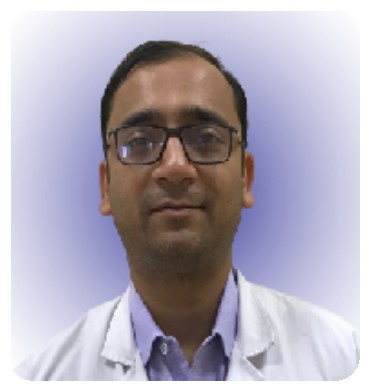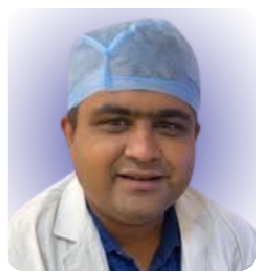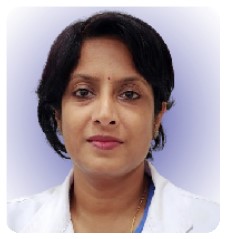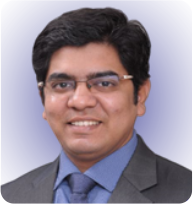Dr. Mantu Jain, Department of Orthopedics, AIIMS, Bhubaneswar, Odisha, India. E-mail: montu_jn@yahoo.com
EditorialBurnout could be understood by the Old Testament, in which Moses father-in-law rebukes, You will only wear yourselves out. The work is too heavy for you; you cannot handle it alone (Exodus 18:1718). Burnout syndrome was first introduced by Freudenberger in 1974 [1]. It is now a global concern, though it is very much under-reported and discussed in our country. Shanafelt et al. reported it in about 40% of physicians and a slightly higher rate of 53% among surgeons, by comparison [2]. On top of this ladder, orthopedic surgeons are just behind trauma surgeons in ranking [3]. Occupational burnout syndrome is a feeling of emotional exhaustion, depersonalization, and low sense of personal accomplishment secondary to chronic occupational stress [4]. In the high-stakes world of surgery, the demanding nature of the profession can take a toll on surgeons mental and physical well-being and disturb their healthy work–life balance. The etiology is multifactorial, including personal, working environment, and career ambitions, and surgeons often have a combination of these [5]. Long working hours, intense pressure during surgeries, and the emotional burden of dealing with life-and-death situations can lead to chronic stress [6]. Hierarchy in the workplace, over-demanding aggressive patients, and increasing medicolegal implications are additions to surgeon burnout. Due to the incorporation of new techniques and equipment, surgeons are compelled to be lifelong learners for their scientific and technical excellence in their practice. On top of these, the inclusion of administrative tasks takes away their time from patient care and contributes to stress. Limited emotional support, both within the workplace and personally, also contributes to feelings of isolation and burnout. All of these negatively impact personal well-being and threaten surgeons longevity and the safety of patients to whom they provide care. Therefore, burnout affects the well-being of surgeons and can have severe implications for the quality of patient care. Fatigued surgeons may experience reduced job performance and develop an emotional milieu that contributes to medical errors [7]. On the personal front, they suffer from poor physical quality of life, psychosomatic issues, stress, depression, insomnia, fatigue, relationship issues, substance abuse, and suicide. Recently, Jennings et al. reported that burnout-induced suicides are highest among orthopedic surgeons [8]. Therefore, recognizing burnout among surgeons is crucial for medical professionals well-being and the quality of patient care. Several tools have been devised to measure burnout, which include the Maslach Burnout Inventory, the Copenhagen Burnout Inventory, and the Mayo Clinic Physician Well-being Tool [2, 9, 10]. Addressing burnout needs social and institutional-level support. A few strategies are improving the workplace environment, promoting teamwork, and reducing the administrative workload. Darrell Cambell even suggested modifying the surgical curriculum to the extent of providing proper mentorship right from the trainees time [11]. He said, “In the classic training program, we have taught how to perform surgery but not how to live as a surgeon. Organizations can conduct regular surveys for feedback and support, flexible working hours when required, and medicolegal support in adverse outcomes or major complication cases. Regular and timely physical and mental health checkups and training programs focused on resilience, stress management, and coping strategies can enhance surgeons ability to navigate challenging situations [12]. At an individual level, one needs to chalk out a work–life balance. As rightly said, “If your compassion does not include yourself, it is incomplete. One needs to introspect, recognize one’s own limits, and not set unrealistic goals. We need to understand that burnout is a Choice that we make, and once we understand and deal with the choices that lead to burnout, we would understand that the choices are completely avoidable. Although our organizations and society would have us continuously work to our maximum capacity (as per their standards), we should define these work parameters for ourselves. Personal acceptance of burnout and insights into reasons for burnout with measures that will reduce these reasons are the main measures for dealing with burnout for professional reasons. In addition, inculcating some self-care practices such as exercise, yoga, meditation, sports, and music. would help too. Vacation and vocation should be an integral part of busy surgeons lives. Finally, one should be bold enough to communicate and seek help when required because burnout is real and not a sign of personal failure. We should all strive to be resilient health-care providers in a conducive professional environment.
References
- 1.Freudenberger H. Staff burn-out. J Soc Issues 1974;30:159-65. [Google Scholar]
- 2.Shanafelt T, Hasan O, Dyrbye L, Sinsky C, Satele D, Sloan J, et al. Changes in burnout and satisfaction with work-life balance in physicians and the general US working population between 2011 and 2014. Mayo Clin Proc 2015;90:1600-13. [Google Scholar]
- 3.Wang J, Hu B, Peng Z, Song H, Cai S, Rao X, et al. Prevalence of burnout among intensivists in mainland China: A nationwide cross-sectional survey. Crit Care 2021;25:8. [Google Scholar]
- 4.Maslach C, Jackson S. The measurement of experienced burnout. J Organ Behav 1981;2:99-113. [Google Scholar]
- 5.Wang S, Li L, Jin Y, Liao R, Chuang YC, Zhu Z. Identifying key factors for burnout among orthopedic surgeons using the analytic hierarchy process method. Int J Public Health 2023;68:1605719. [Google Scholar]
- 6.Zheng H, Shao H, Zhou Y. Burnout among Chinese adult reconstructive surgeons: Incidence, Risk factors, and relationship with intraoperative irritability. J Arthroplasty 2018;33:1253-7. [Google Scholar]
- 7.Marmon LM, Heiss K. Improving surgeon wellness: The second victim syndrome and quality of care. Semin Pediatr Surg 2015;24:315-8. [Google Scholar]
- 8.Jennings JM, Gold PA, Nellans K, Boraiah S. Orthopaedic surgeons have a high prevalence of burnout, depression, and suicide: Review of factors which contribute or reduce further harm. J Am Acad Orthop Surg 2022;30:e528-35. [Google Scholar]
- 9.Dyrbye LN, Satele D, Sloan J, Shanafelt TD. Utility of a Brief screening tool to identify physicians in distress. J Gen Intern Med 2013;28:421-7. [Google Scholar]
- 10.Barton MA, Lall MD, Johnston MM, Lu DW, Nelson LS, Bilimoria KY, et al. Reliability and validity support for an abbreviated Copenhagen burnout inventory using exploratory and confirmatory factor analysis. J Am Coll Emerg Physicians Open 2022;3:e12797. [Google Scholar]
- 11.Campbell DA, Sonnad SS, Eckhauser FE, Campbell KK, Greenfield LJ. Burnout among American surgeons. Surgery 2001;130:696-705. [Google Scholar]
- 12.Hamdan M, Haddad BI, Alshrouf MA, Al-Ani A, Alisi MS, Hammad Y, et al. Burnout, grit and resilience among Jordanian orthopedic surgeons: A cross-sectional study. BMC Med Educ 2023;23:593. [Google Scholar]








